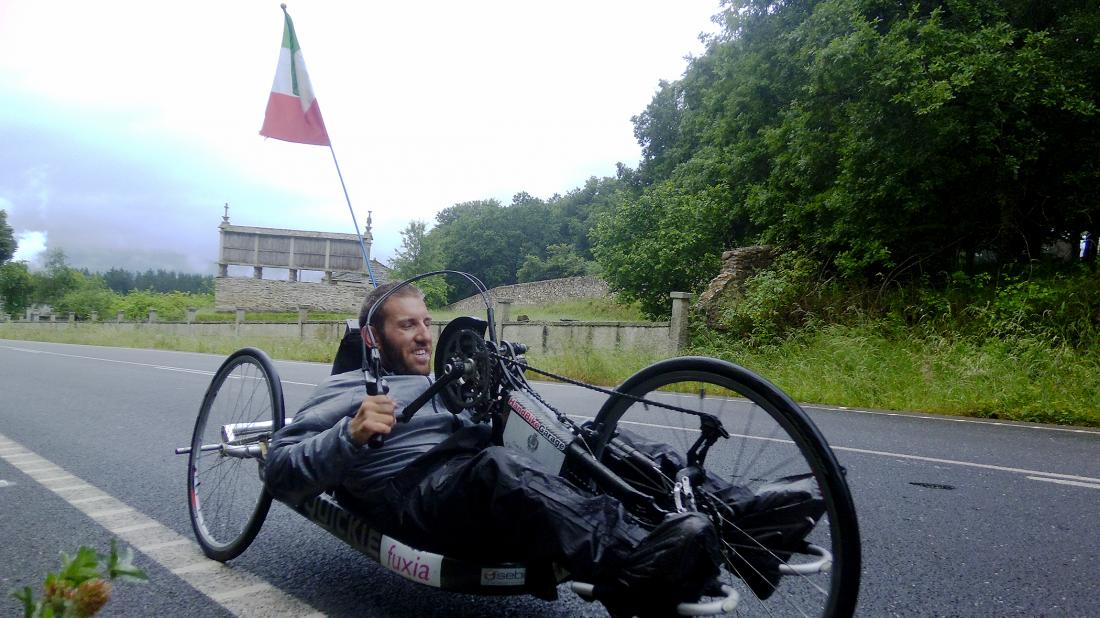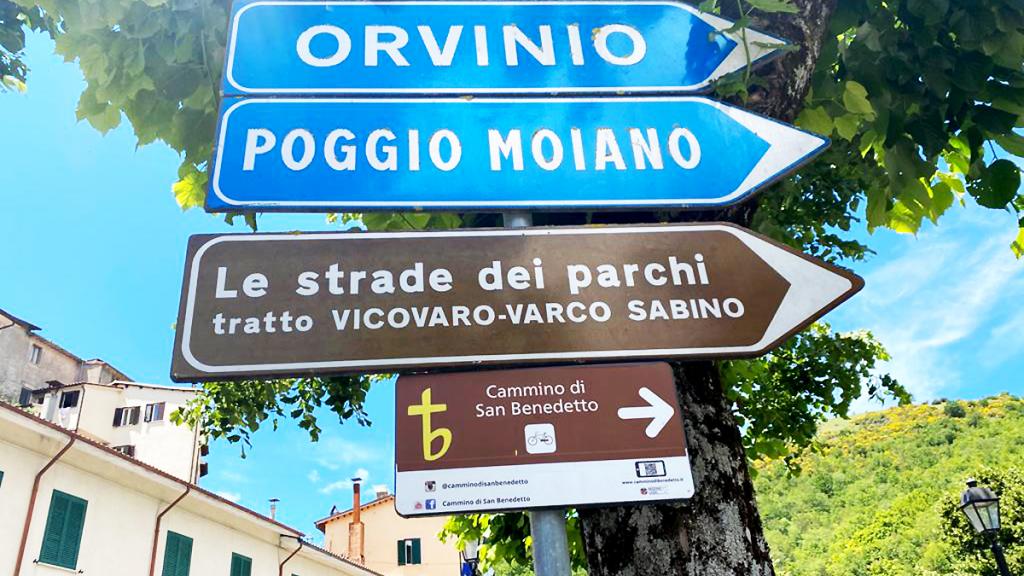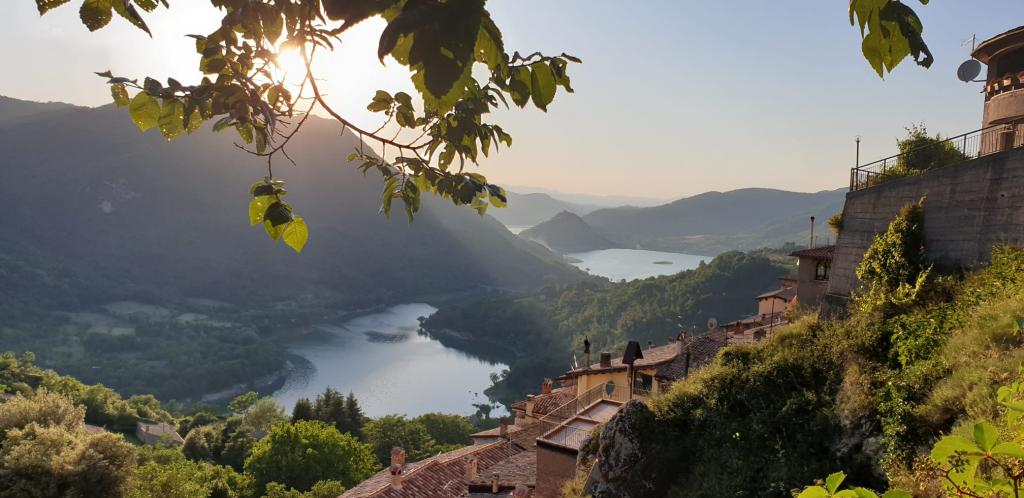Sustainable tourism can be a development lever for accessible tourism: the Med Pearls case study of the Way of St Benedict in Sabina-Reatina

People with disabilities and older people are recognised as an emerging market and accessible tourism is a niche experience. Accessible tourism enables people with access needs, including mobility, vision, hearing and cognitive access dimensions, to travel independently and with equity and dignity through the provision of universally designed tourism products, services and environments. This definition is inclusive of all persons, including those travelling with children in wheelchairs, persons with disabilities and the elderly. A strategic approach to the creation of tourist destinations accessible to all must be included in sustainable tourism projects.
Strategies that a tourism operator might use to align with the principles of universal design should include barrier-free design in the planning process, acquire knowledge of appropriate laws and internationally recognised accessibility standards, include people with disabilities and an accessibility specialist as members of the planning team, and consider aesthetics and environmental values when planning. Social sustainability occurs when systems, structures and relationships actively support the ability of current and future generations to create healthy, liveable communities. Socially sustainable communities are equitable, diverse, connected, democratic and provide a good quality of life.
With the scientific and technical support of the Italian association "Free Wheels" of Pietro Scidurlo, the routes are made accessible not only to people with disabilities but to all people with special needs. For those with reduced mobility it is essential to understand which points are accessible; for those with food allergies it is essential to know where to find food they can eat; for families with children it is essential to know where to find sleeping accommodation; for elderly people with reduced mobility it is essential to know if there are benches along the route. For all these different specificities, "Free Wheels" has developed a working protocol that can be universally applied to any route. When Free Wheels makes a route accessible to those with specific needs, it opens it up to a large proportion of foreign and local travellers.


In Italy, there are at least ten million people who have specific needs, including a disability. Free Wheels' intervention includes a study of the territory, an evaluation of alternative accessible routes that lead to the same stages of the standard itinerary, the verification of these routes, the mapping of hospitality and services for walkers. If we ask the tourist office of a town which restaurants are accessible for people with reduced mobility, it often happens that they are not able to give a certain answer for the simple fact that they do not have a map of the Route. Free Wheels maps all the places that need to be accessible: restaurants, hotels, B&Bs, bars, fountains, car parks, benches. Because when we talk about specific needs we have to think about a wide range of services.
Free Wheels mapped the Way of St Benedict which is located in the Italian pilot area Sabina-Reatina of the Medpearls project. Free Wheels had already been selected as a partner for a European project on the accessibility of this path. Free Wheels was asked to trace and map the asphalted route, which winds its way through nature among small, beautiful villages. Free Wheels used roads with gentle slopes and little traffic, which can be easily covered with electrically driven devices such as pedal-assisted bicycles and electric hand bikes. Among the various technological aids, there are also special electric wheels to be fitted to the front of wheelchairs, which provide great grip and stability.
The Way of St Benedict in Sabina-Reatina has an entirely accessible route, thanks also to the association "Amici del Cammino di San Benedetto", which has been of great help in its realisation. It is a religious path to be followed in sixteen stages, for a total of 305 kilometres on foot or 345 by bicycle, and winds its way through Norcia, Cascia, Monteleone di Spoleto, Leonessa, Poggio Bustone, Rieti and the Sacred Valley, Rocca Sinibalda, Castel di Tora, Orvinio, Mandela/Vicovaro, Subiaco, Trevi nel Lazio, Collepardo, Casamari, Arpino, Roccasecca and Montecassino. This pilgrimage route, which has been studied in great detail, is thematic because it is not based on a historical route but on the places where St Benedict (480-547) lived and worked. The route includes six of the most beautiful villages in Italy: Norcia, Monteleone di Spoleto, Castel di Tora, Orvinio, Percile (reachable from Orvinio on the bike route) and Subiaco.
In addition to the cultural aspect, there is also the natural aspect. We are, in fact, in an area rich in water. The province of Rieti has one of the most generous hydrographic basins in Europe. In addition to Lake Turano, there is the valley of the Aniene, a very clear river, used since Roman times, with three aqueducts, and in Ciociaria there are the Melfa Gorges with their sheer walls and breathtaking landscapes. The water and the woods make the Way of St Benedict cool and shady even in the height of summer. And even in winter it is comfortable. When you walk through these unspoilt beech and oak forests, you breathe in 30% more oxygen. This gives well-being to the body and mind of people with disabilities.
The ideas of sustainability, inclusion and accessibility of Mediterranean Pearls NGO with Free Wheels, find correspondence with those of Pope Francis, who in 2015 wrote the encyclical "Laudato si'", with those of the UN that in 2015 produced the 2030 Agenda, and with those of the European Union. It is a path that makes the inhabitants of the Sabina lands "apostles of welcome".
The traveller on the Way of St Benedict feels welcome because there are people in the area who take care of him. Good planning, good management of the Way and hospitality are the winning ingredients of this itinerary. It is a sustainable territory because of the very low pollution of the air and water, and the scarce presence of electromagnetic waves. The environment is so uncontaminated that people who suffer from MCS (Multiple Chemical Sensitivity Syndrome) come to the village of Orvinio. In order to preserve this ecosystem, we believe that tourism can work for no more than 30% of the local economy. The Guardian newspaper, in its article '10 of the best long-distance walking routes in Italy', lists the Way of St Benedict as the first of the most beautiful in Italy.
-------------------------------------------------------------------------
Check regularly: www.enicbcmed.eu/projects/med-pearls
And our social media:
@MedPearlsProj - Med Pearls Project (Facebook) - medpearlsproject (Instagram)







